This assignment aims to serve as an interface for users to design freeform surfaces which would then be optimised based on certain parameters. These surfaces are generated by a series of components placed in a flat grid connected by flexible rotated joints. When the components are actuated, the flat grid attains a freeform structure. This serves as a formwork for a surface that can later be cast in concrete, resin coated fibreglass, etc. The design of the freeform surface is governed by the size of the components, the rotational angle of the joints, the fact that each component on the grid is planar among other things. Using these parametres as the ultimate optimal values to attain, the degree of curvature and the size of the compoents (planarisation of quad faces on a mesh) are subjected to change for the purpose of optimisation.
This optimisation is mainly done so as to optimise the mass fabrication of components that form the freeform structure. These components come only in certain sizes and they are structurally most stable if their rotational angles are between 10 and 15 degrees. Meaning for every designed surface, within the given parameters, there are numerous optimised options, some better than the others that would give rise to a surface that can be easily fabricated components that are available in the market.
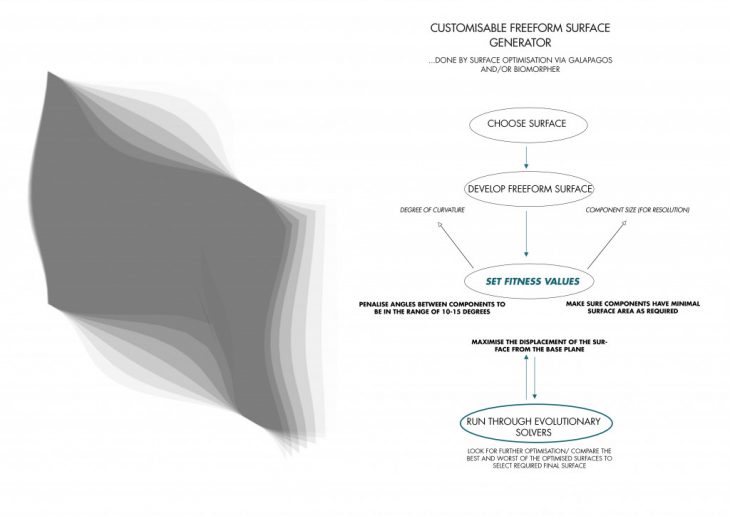
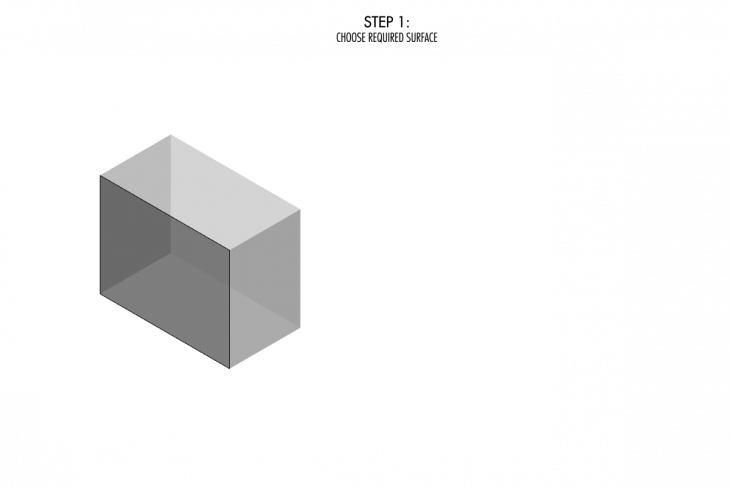
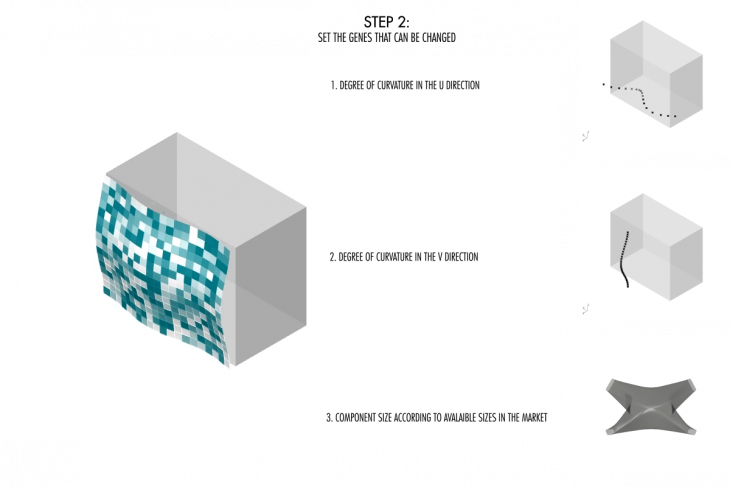
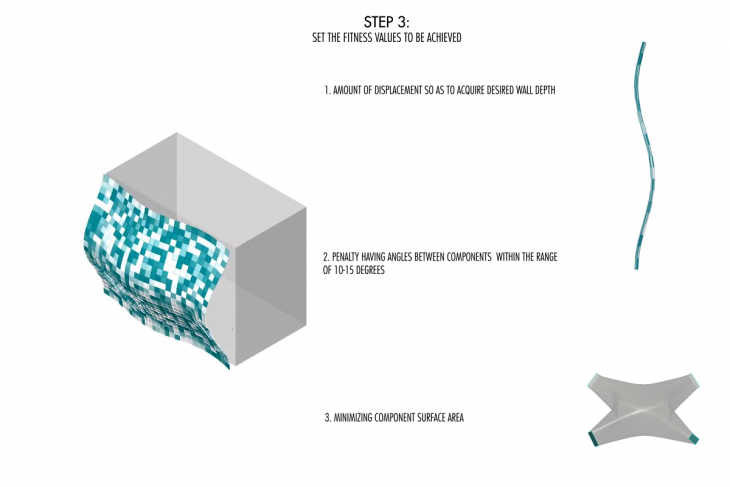
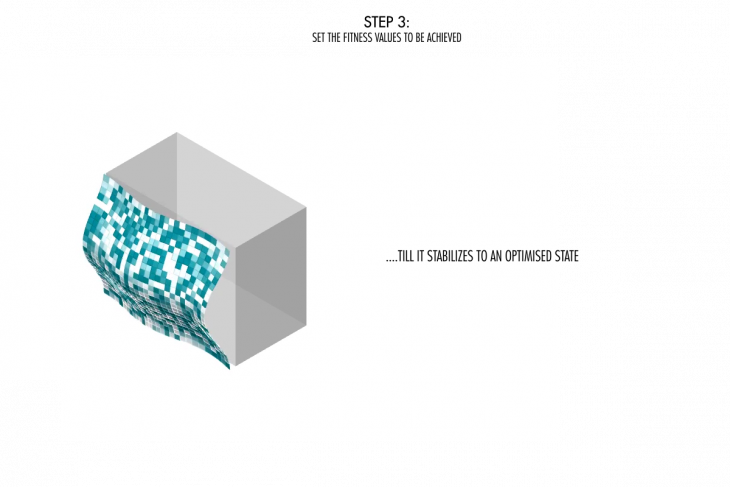
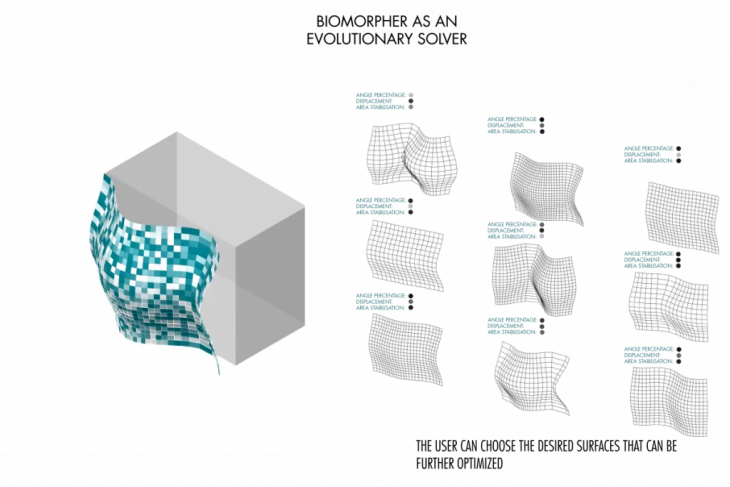
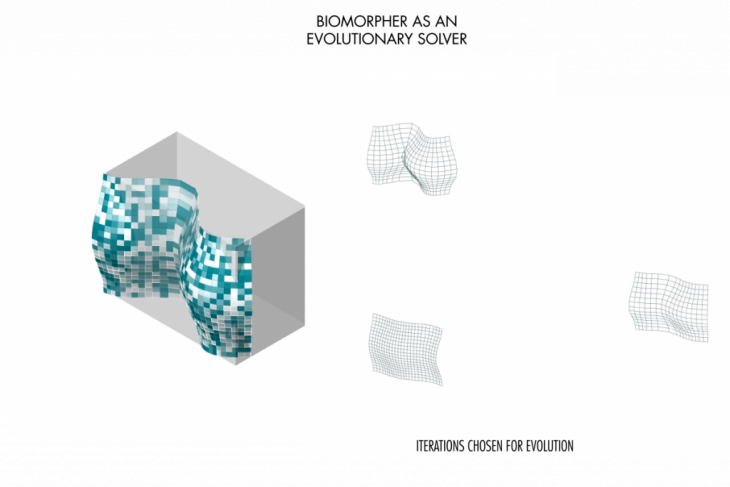
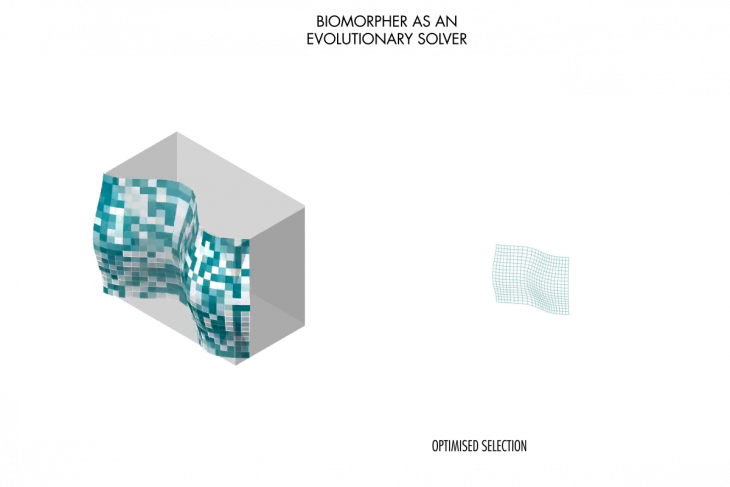
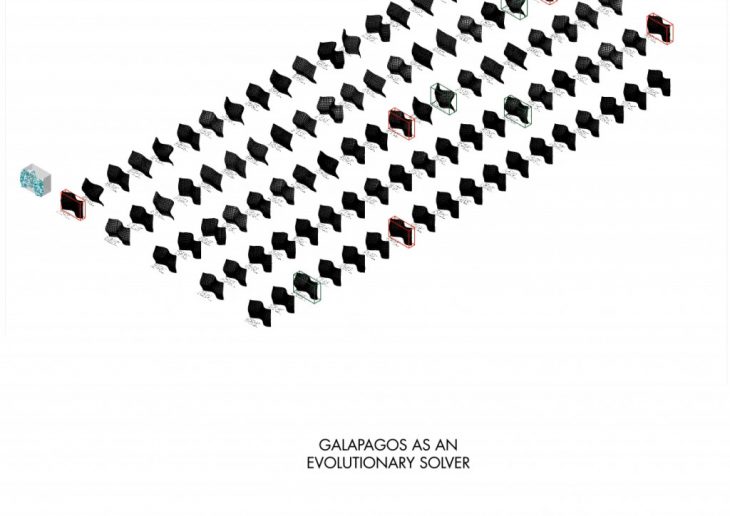
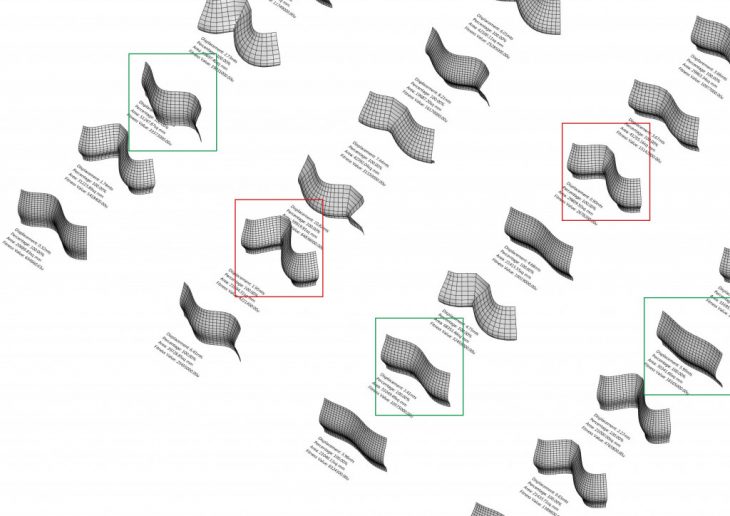
The image shows the best and worse optimisation scenarios
The final selected surface:
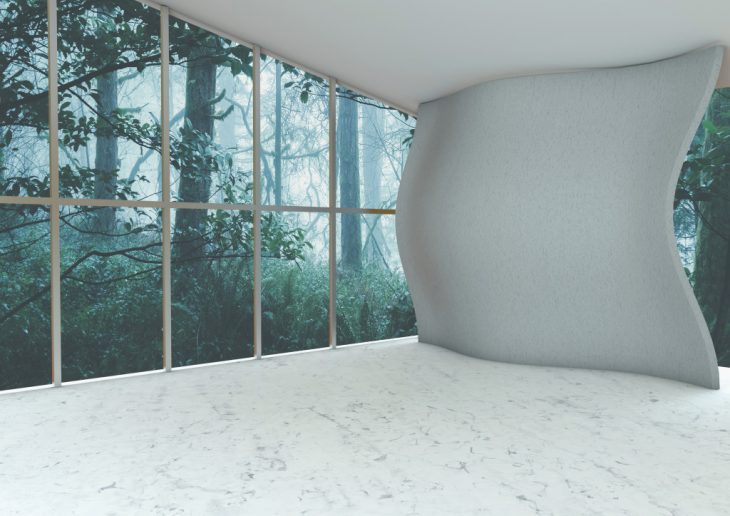
TUTORS: Rodrigo Aguirre
STUDENT ASSISTANTS: Nikoleta Mougkai, Daniil Koshelyuk.